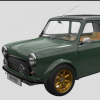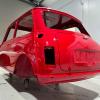Can someone please confirm brake line flare types and sizes
**if there's a definitive post on this already can it be pinned maybe?
so far I have:
sizes
master cylinder, 1 x M10 (top, front brakes) + 1 x M12 (bottom, rear brakes)
then the bias valve which is all 4 x 3/8" (left side front, right side (offset) rear) **or possibly metric ? just been watching a video on it arrgh**
everything else is just 3/8" ?? including the T piece at the rear subframe, those ones went in all the way using fingers, I think they're a good fit
also I need to work out what happens around the front subframe, I'm sure I've got the bits somewhere (ill look at the diagrams)
flare types
I've read a post saying bubble type flare everywhere except where connecting to flexi hoses, which need double flares? is that right
I've been doing double flares everywhere but I've not done loads yet I can easily change them
Edited by stuart bowes, Yesterday, 02:20 PM.


















